View From the Couch: A Bronx Tale, Freaks, Irwin Allen Collection, etc.
View From The Couch is a weekly column that reviews what’s new on Blu-ray, 4K and DVD.
 FILM FRENZY
FILM FRENZY
Your source for movie reviews on the theatrical and home fronts
View From The Couch is a weekly column that reviews what’s new on Blu-ray, 4K and DVD.
Prince Randian in Freaks (Photo: Criterion)
By Matt Brunson
(View From The Couch is a weekly column that reviews what’s new on Blu-ray, 4K and DVD. Ratings are on a four-star scale.)
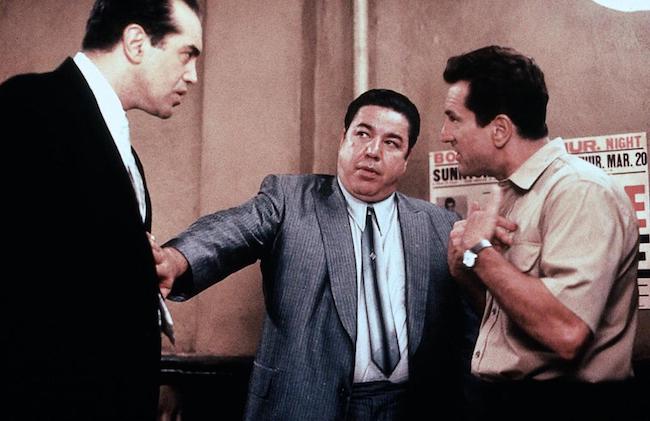
A BRONX TALE (1993). Robert De Niro made his directorial debut with a movie about a New York gangster, but, happily, the result is more than just a generic knockoff of the type of picture the actor routinely made with Martin Scorsese. Instead, it’s a morality tale brought off with a great amount of style and conviction, with De Niro directing, Chazz Palminteri adapting his own one-man stage show (based on his childhood experiences), and both men essaying the leading roles. De Niro plays Lorenzo Anello, a hard-working bus driver whose son Calogero, aka “C,” idolizes neighborhood crime lord Sonny (Palminteri). Lorenzo wants his boy to lead a clean life, but once Calogero becomes a teen, he divides most of his time between listening to the advice given by Sonny and hanging out with his own buddies, a pathetic group of incredibly dense and racist kids. Interestingly, much of the advice the educated Sonny lays on Calogero is preferable to the opinions of the working-class Lorenzo — for starters, it’s Sonny who encourages Calogero to pursue a lovely black girl (Taral Hicks) despite the area’s simmering racial tensions (the film is set in the 1960s), while Lorenzo believes in a more segregationist society. De Niro is able to coax strong performances out of the kids who play Calogero, Francis Capra at age 9 and Lillo Brancato Jr. at age 17, while Palminteri’s supporting roster includes lots of colorful characters — I particularly liked the description of “Jo Jo the Whale” (Fred Fischer) as someone so obese that it was rumored his shadow alone once crushed a dog.
Extras in the 4K UHD edition consist of an archival making-of featurette; new interviews with De Niro and Palminteri; and the theatrical trailer.
Movie: ★★★
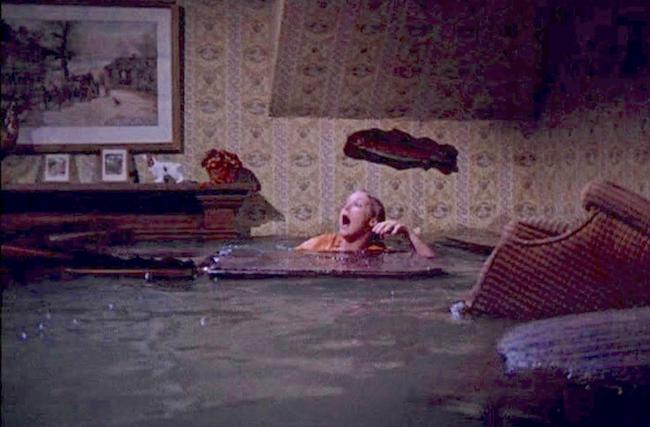
IRWIN ALLEN: MASTER OF DISASTER COLLECTION (1976-1983). While acknowledging their general crumminess, I’ve nevertheless long been a sucker for the disaster movie, those “all-star idiocies” (as viewed lovingly/derisively by various critics) from the 1970s that found a group of slumming movie stars spending a couple of hours coping with crippled aircrafts, burning buildings, sinking ships, enraged animals, and other natural or manmade crises. The chief practitioner of the genre was producer Irwin Allen, whose involvement was so complete that he earned the nickname “The Master of Disaster.” An Academy Award winner for the 1953 documentary The Sea Around Us, Allen also made his mark on television with such popular series as Voyage to the Bottom of the Sea, Lost in Space, and Land of the Giants. But it was the disaster flick that became his bread and butter, as he spent the majority of the seventies overseeing such projects. This new box set from Shout! Studios doesn’t contain his biggest hits, 1972’s The Poseidon Adventure (my pick for the best in this genre) and 1974’s The Towering Inferno (which somehow earned a Best Picture Oscar nomination to compete against the likes of The Godfather Part II and Chinatown!), nor does it offer his most notorious picture, 1978’s The Swarm (reviewed here). But it does include his final two theatrical releases, both responsible for helping kill off the genre, as well as the five TV movies he made in rapid succession over a four-year span at the end of the ‘70s (although two were shelved until the early 1980s).
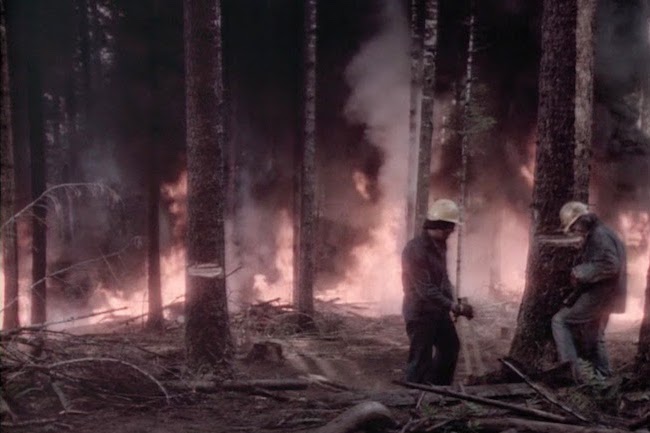
The set kicks off with a pair of TVMs whose narrative urgency is reflected by the exclamation marks helpfully applied to the titles: Flood! (1976) and Fire! (1977). In Flood!, there are signs that the titular waterworks will decimate an Oregon town, but, in true Jaws fashion, the mayor (Richard Basehart) downplays the warnings since it might disrupt tourism. Robert Culp and Martin Milner play the humorless heroes, with each actor trying to see who can be more boring (Milner easily wins). In fact, the whole production is pretty sleepy. Better is Fire!, which finds two road-crew convicts (Erik Estrada and Neville Brand) hoping that a blaze they start will cover their escape attempt. Among the heroes are a mill owner (Ernest Borgnine) and husband-and-wife doctors (Alex Cord and Patty Duke Astin). While rather routine, Fire! at least offers more visual excitement than Flood!, and the emoting by all involved is also marginally better.

Hanging by a Thread (1979) is the best film in the set, as its extreme length of 190 minutes (it was shown in two parts when it premiered on NBC) allows viewers to invest in the characters and the various problems confronting them. This one finds a group of friends trapped in a crippled cable car dangling over a bottomless canyon. As they wait for the ground personnel to figure out how to rescue them, they reflect (via flashbacks) on past incidents leading up to this predicament — one (top-billed Sam Groom) is hiding out from gangsters as he prepares to testify in court; another (Bert Convy) is still trying to overcome his alcoholism; and several are involved in covering up the accidental death of a friend. The performances are uniformly fine, the plot developments are involving, and the pacing is brisk enough to prevent the extended length from becoming a problem.
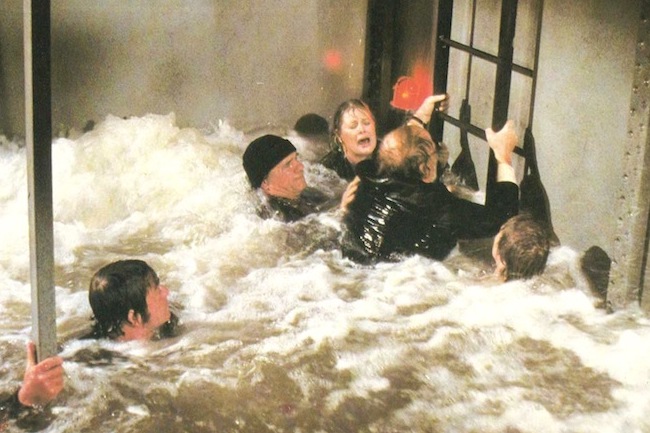
The theatrical release Beyond the Poseidon Adventure (1979), the belated sequel to The Poseidon Adventure, is fairly worthless as a movie or a cultural artifact, but God bless its kitschy existence anyway. Picking up right where the original ended, it finds a tugboat captain (Michael Caine), his right-hand man (Karl Malden), and their chirpy passenger (Sally Field) boarding the overturned ship with the intention of salvaging its valuable cargo. Instead, they find most of their time spent rescuing some survivors (Peter Boyle, Jack Warden, Mark Harmon, Shirleys Knight and Jones) and unconvincingly throwing themselves around the set after every camera cut to yet another internal explosion. Caine’s clearly here for the big bucks, while Field’s in full-on perky mode (she would deservedly win an Academy Award for her other 1979 picture, Norma Rae). And did I mention that Telly Savalas portrays a villain named Stephan Svevo — not to be confused with Crank‘s Chev Chelios — and that Slim Pickens plays a blustery Texan named (what else?) Tex?
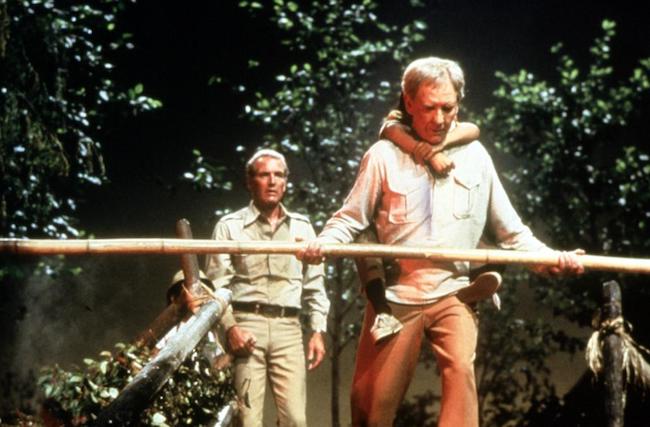
The end of the ‘70s witnessed the disaster flick experiencing flop after flop after flop at the box office — not just Allen’s films but also Avalanche, Hurricane, Meteor, and more — and the massive failure of When Time Ran Out… (1980) effectively ended the entire cycle that had begun with the 1970 release of the bloated Airport. I can’t agree with the consensus in many circles that this was the absolute worst of the genre — not with the existence of The Concorde … Airport ’79 — but it’s pretty lousy, with Paul Newman, William Holden, Jacqueline Bisset, and other unfortunate souls playing characters trapped at an island resort by an erupting volcano. Risible sequences abound, many involving Burgess Meredith as an elderly man whose skills as a former circus tightrope walker come in mighty handy. Costumer Paul Zastupnevich had earned a dubious Oscar nomination for The Swarm, leading Siskel and Ebert to lambast the Academy for honoring beekeeper suits and street clothes “off the rack.” Zastupnevich followed up with a Best Costume Design Oscar nomination for When Time Ran Out …, leading me to lambast the Academy for honoring asbestos suits and more street clothes off the rack.

It figures that the two worst films in this collection would be the two theatrical releases, yet the weakest of the TV flicks would be the two closing out this set: The Night the Bridge Fell Down (1980) and — welcome back, exclamation mark! — Cave-In! (1983). Both were filmed in 1979 and prepped by Allen for 1980 release, but NBC (the network behind all five of the TV films) opted instead to shelve both pictures for U.S. broadcast until 1983. The Night the Bridge Fell Down, which had the awful luck of debuting opposite the final episode of M*A*S*H (which remains the most watched primetime series episode of all time; oops!), runs a full three hours, but, unlike Hanging by a Thread, it’s too dopey to warrant such an overextended length. James MacArthur, Hawaii Five-O’s Danno, is the snoozy hero, trying to save the people trapped on a collapsing metropolitan bridge — these include a bank robber (a laughably miscast Desi Arnaz Jr.), a white-collar criminal (Leslie Nielsen), and a mechanic (Gregory Sierra, recognizable to fans of Sanford and Son, Barney Miller, and a classic episode of All in the Family). This is silly rather than suspenseful. Equally limp is Cave-In!, with nondescript Dennis Cole as a park ranger who’s trapped by the title crumble alongside a haughty professor (Ray Milland), a heroic cop (Leslie Nielsen again), a violent criminal (James Olson), and other assorted stock players.
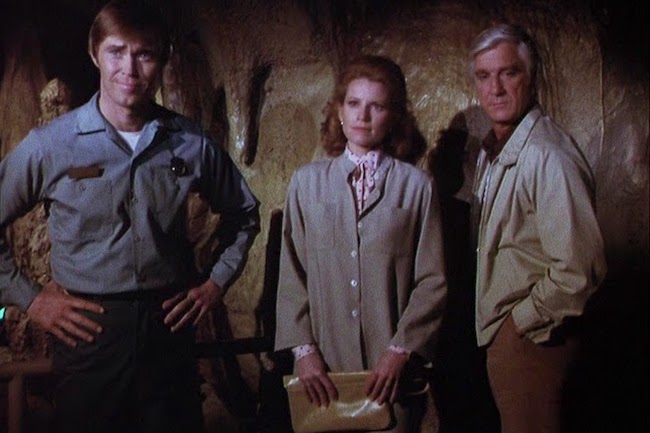
The most (pleasantly) shocking aspect of the box set is that the TV movies look so good — it’s doubtful they popped off the screen in such a crisp manner even upon their original releases, when most TV sets had to depend on rabbit-ear antennas for clarity. This collection includes both the theatrical versions and extended television cuts of Beyond the Poseidon Adventure and When Time Ran Out… (the latter renamed Earth’s Final Fury for the boob tube); other assorted extras include still galleries, network promos, and trailers.
Flood!: ★★
Fire!: ★★½
Hanging by a Thread: ★★★
Beyond the Poseidon Adventure: ★½
When Time Ran Out…: ★½
The Night the Bridge Fell Down: ★★
Cave-In!: ★★

TOD BROWNING’S SIDESHOW SHOCKERS (1925-1932). Before his career as the director of such popular horror yarns as Lon Chaney’s 1927 London After Midnight and Bela Lugosi’s 1931 Dracula, Tod Browning spent his late teens and the entirety of his twenties with the circus, where he worked as a barker, a clown, a contortionist, and in various other capacities. His background helped inform his unique contributions to cinema, and never more obviously than in the three pictures assembled for a new box set from Criterion. Two are silents while the talkie, the marquee attraction in this collection, proved to be his most controversial — and best — film.
Browning, who just the previous year had a smash hit with Dracula, basically shortchanged his own career (as Michael Powell would do with 1960’s Peeping Tom) with the notorious Freaks (1932). By overseeing a movie that turned so many people off, his status as a Hollywood filmmaker was clearly affected, as he would make only four more pictures after this one. With various circus sideshow performers (little people, Siamese twins, “pinheads,” etc.) at its center, this astounding film tells the story of how a voluptuous trapeze artist named Cleopatra (Olga Baclanova) tries to dupe the diminutive Hans (Harry Earle) for financial gain — and what happens when her scam is discovered (“One of us!”). Is this film sensationalistic or sensitive? Its various titles (Freaks, Nature’s Mistakes, The Monster Show) would indicate the former, but the movie clearly depicts its unusual protagonists in a wholly sympathetic light — a position made even more apparent by the “Special Message” prologue that was added in 1947 (and included as a bonus feature in this set). Regardless, the film was heavily edited upon its original U.S. release and banned in England for 30 years. Today, it’s a cult favorite that continues to resonate — The Player, Toy Story, Hedwig and the Angry Inch, and the Ramones have all paid it tribute.
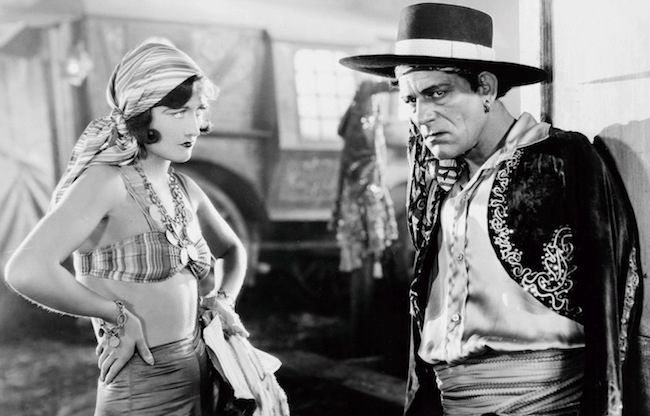
During the silent era, Browning and Lon Chaney made 10 movies together, nearly all of them popular with both critics and audiences. One such effort was the aforementioned London After Midnight (the most famous of “lost” films, it was reconstructed with photographs and shown on TCM back in 2002); another was The Unknown (1927), which also showcased Joan Crawford in one of her earliest leading roles. Freakish and fascinating, this stars Chaney as Alonzo the Armless, a circus performer whose lack of upper appendages means he uses his feet for everything from eating and drinking to smoking and knife-throwing. Of course, Alonzo isn’t really missing his arms — he’s keeping them hidden since he’s wanted by the police for a variety of crimes — but when he falls for his androphobic assistant Nanon (Crawford), he devises an insane plan to ensure she reciprocates his love. The Unknown relies on symbolic flourishes and Chaney’s animalistic performance to punch across sexually charged themes involving virility, impotence, and self-sacrifice in the name of love (or is it lust?).
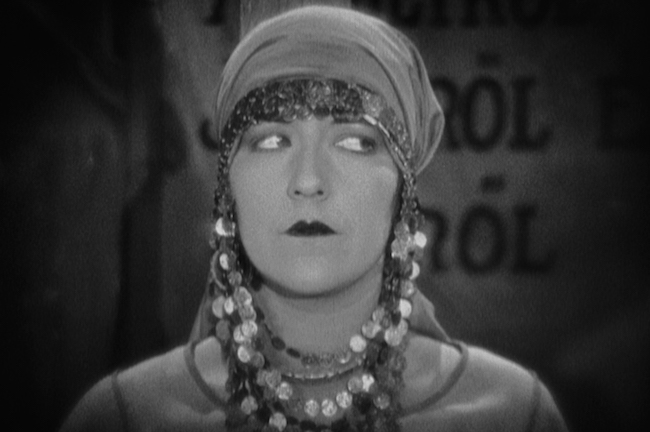
The final title in the set is the rarely seen drama The Mystic (1925). In this one, an American con man (Conway Tearle) talks a phony Hungarian fortune teller (Eileen Pringle) and her cohorts into traveling with him to New York in order to scam the elite. The sawdust doesn’t course through this diverting picture as thickly as it does Freaks and The Unknown — the carnival setting is used only minimally — but the story’s dependency on illusion and misdirection nevertheless makes it of a piece with the others.
Blu-ray extras include audio commentaries on Freaks and The Unknown by film scholar and author David J. Skal (Dark Carnival: The Secret World of Tod Browning, Hollywood’s Master of the Macabre); an introduction to The Mystic by Skal; the 2004 documentary Tod Browning’s Freaks: The Sideshow Cinema; a discussion of the alternate endings to Freaks; and Skal’s reading of Tod Robbins’ “Spurs,” the short story that was the basis for Freaks.
Freaks: ★★★★
The Unknown: ★★★½
The Mystic: ★★★
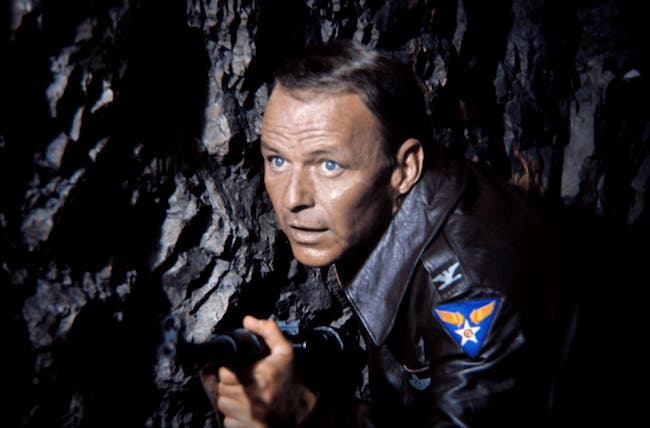
FROM SCREEN TO STREAM
VON RYAN’S EXPRESS (1965). One of the many fine World War II adventure yarns made during the 1960s, Von Ryan’s Express is choice escapist fare, the sort best watched on a lazy Saturday afternoon when it’s just too hot/cold/rainy/what-have-you to venture far from the couch. Frank Sinatra, typically solid (he remains an underrated dramatic actor, Oscar for From Here to Eternity notwithstanding), stars as Colonel Joseph Ryan, a POW whose initial efforts to cooperate with his German captors earn him the nickname “Von Ryan” from the other prisoners. But once the POWs are herded onto a train headed for another internment camp, it’s Ryan who leads the revolt against the Nazis, taking over the train and steering it toward Switzerland and freedom. Many fine vignettes make up this rip-roaring yarn, culminating in a ferocious battle on an Italian mountainside where the train’s occupants must defend themselves against strafing German airplanes. The cast also includes Trevor Howard as the senior British officer, a young James Brolin in his first credited screen role, and Adolfo Celli, who was also appearing as the villainous Largo in the same year’s 007 outing Thunderball. This earned an Oscar nomination for Best Sound Effects.
Movie: ★★★